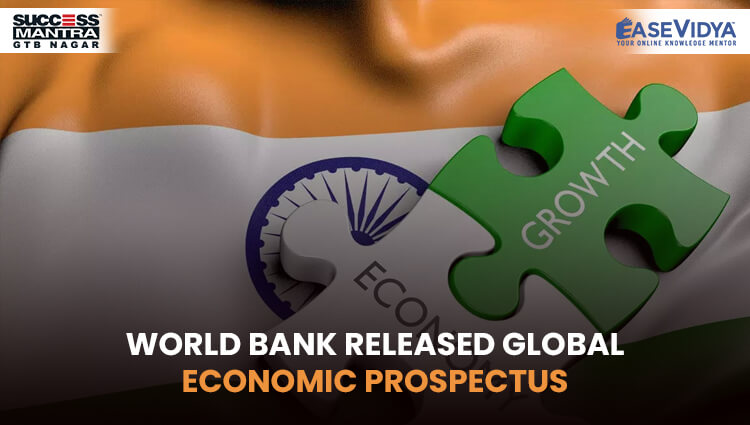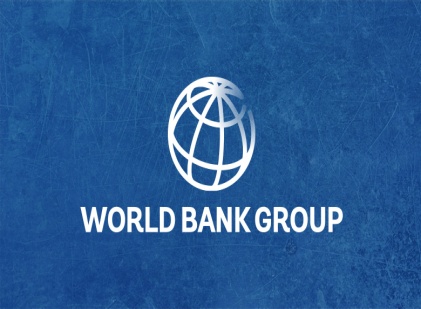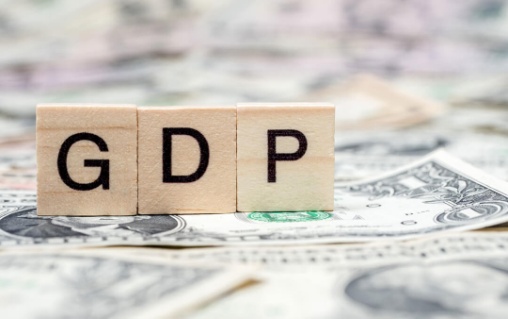
WORLD BANK RELEASED GLOBAL ECONOMIC PROSPECTUS
WORLD BANK RELEASED GLOBAL ECONOMIC PROSPECTUS

Recently, the World Bank has released its June 2021 Global Economic Prospects where it has forecast India’s GDP growth to be 8.3% for the year 2021-22. India's economy is expected to grow at 8.3% for Fiscal Year 2021-22, 7.5% for 2022-23 and 6.5% for 2023-24. The world economy is expected to expand 5.6%, the fastest post-recession growth rate in eighty years. However, global output will still be 2% below pre-pandemic projections by year-end.
- For FY 2020-21: The projected growth compares to the worst ever contraction of 7.3% in FY 2020-21 and 4% expansion in 2019-20. India’s recovery is being hampered by the largest outbreak of any country since the beginning of the pandemic.
- For FY 2021-22: The forecast for FY22 (8.3%) factors in expected economic damage from an enormous second Covid-19 wave and localised mobility restrictions since March 2021.
- For FY 2022-23: Growth is expected to slow to 7.5% as a result of the pandemic’s lingering effects on the financial position of households, companies and banks and possibly low levels of consumer confidence and heightened uncertainty around job and incomes.
STEPS TAKEN BY INDIA
The Reserve Bank of India (RBI) announced measures to provide liquidity to Micro, Small and Medium firms (MSMEs), and loosened regulatory requirements on the provisioning for non-performing assets. Fiscal policy shifted in the FY 2021/22 budget toward higher expenditure targeted at healthcare and infrastructure to boost the post-pandemic recovery. Globally coordinated efforts are essential to accelerate vaccine distribution and debt relief, particularly for low-income countries. As the health crisis eases, policymakers will need to address the pandemic’s lasting effects and take steps to spur green, resilient, and inclusive growth while safeguarding macroeconomic stability. For low-income countries, policies focusing on scaling up social safety net programs, improving logistics and climate resilience of local food supply would be more helpful.
RELATED KEY TERMINOLOGIES

- Gross Domestic Product: GDP is a measure of economic activity in a country. It is the total value of a country’s annual output of goods and services. It gives the economic output from the consumers’ side. GDP = Private consumption + Gross investment + Government investment + Government spending + (exports-imports).
- Recession and Depression, Recession: It is a macroeconomic term that refers to a slowdown or a massive contraction in economic activities for a long enough period, or it can be said that when a recession sustains for long enough, it is called a Recession. Depression: It is a deep and long-lasting period of negative economic growth, with output falling for at least 12 months and GDP falling by over 10% or it can be referred to as a severe and prolonged recession.
- Fiscal Policy: Fiscal policy refers to the use of government spending and tax policies to influence economic conditions. During a recession, the government may employ expansionary fiscal policy by lowering tax rates to increase aggregate demand and fuel economic growth. In the face of mounting inflation and other expansionary symptoms, a government may pursue contractionary fiscal policy.
ABOUT THE WORLD BANK
The Bretton Woods Conference held in 1944, created the International Bank for Reconstruction and Development (IBRD) along with the International Monetary Fund (IMF). The IBRD later became the World Bank. The World Bank Group is a unique global partnership of five institutions working for sustainable solutions that reduce poverty and build shared prosperity in developing countries. It has 189 member countries. India is also a member country.
Its Five Development Institutions: International Bank for Reconstruction and Development (IBRD): Provides loans, credits, and grants. International Development Association (IDA): Provides low- or no-interest loans to low-income countries. International Finance Corporation (IFC): Provides investment, advice, and asset management to companies and governments. Multilateral Guarantee Agency (MIGA): Insures lenders and investors against political risk such as war. International Centre for the Settlement of Investment Disputes (ICSID): Settles investment-disputes between investors and countries. India is not a member of ICSID.
TEST YOURSELF
Q.1 Which of the following statements is/are incorrect in the context of the 'Global Economic Prospectus' released by the World Bank?
- Global Economic Prospects where it has forecast India’s GDP growth to be 7.3% for the year 2021-22: ANSWER
- The forecast for FY22 (8.3%) factors in expected economic damage from an enormous second Covid-19 wave and localized mobility restrictions.
- The world economy is expected to expand 5.6%, the fastest post-recession growth rate in eighty years.
- None of the above
Q.2 Consider the following statements & state which of the following is/are incorrect in the reference to Gross Domestic
- While calculating GDP, income generated by foreigners in a country is taken into consideration.
- While calculating GDP, income generated by nationals of a country outside the country is taken into account.
- Only I follows
- Only II follows: ANSWER
- Both I & II follows
- None of the following
Q.3 From the given options, which of the following is not the report that is published by the World Bank?
- Ease of Doing Business
- Human Capital Index
- Human Development Index (HDI): ANSWER
- Migration and Development Brief
Q.4 Consider the given options & state which of the following statements is correct?
- GDP at factor cost = Net Value Addition + Depreciation: ANSWER
- GDP at factor cost = Net Value Addition - Depreciation
- GDP at factor cost = Net price increase + indirect tax
- GDP at factor cost = Net price increase + direct tax
Q.5 Which of the following is considered as the net value of Gross Domestic Product (GDP) after deducting depreciation from GDPis
- Net national product
- Net domestic product: ANSWER
- Gross national product
- Disposable income












0 Comment